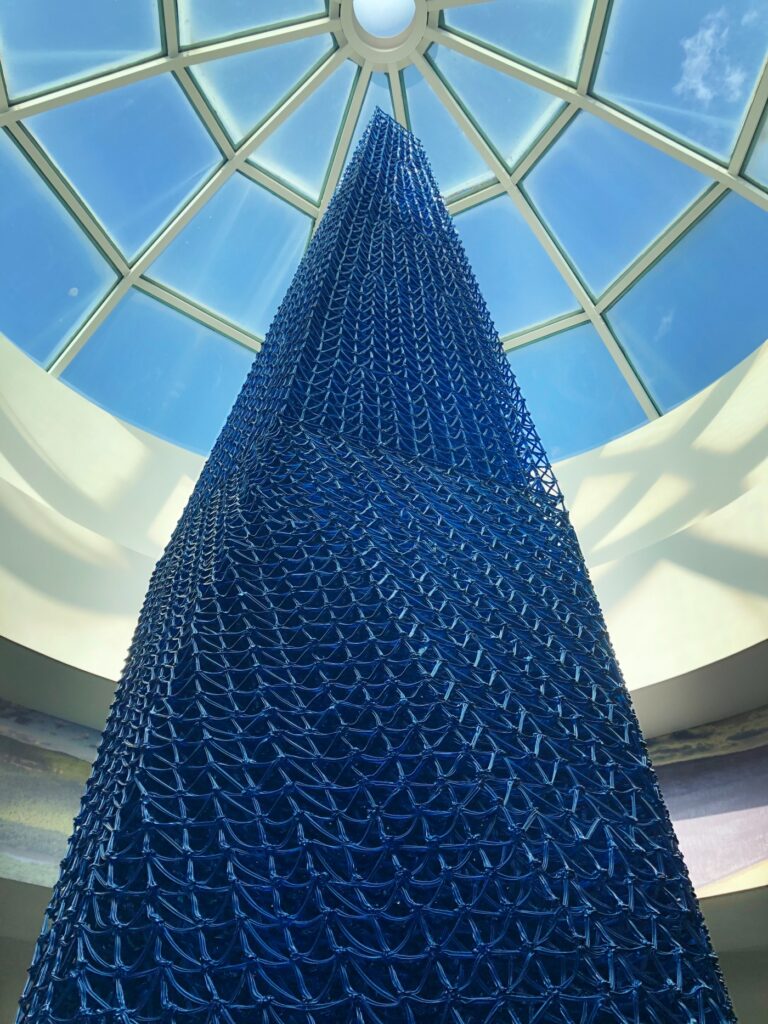Branch Technology, the Chattanooga-based additive construction (AC) firm, has been awarded a $1.13 million contract from the US Air Force for its proprietary Cellular Fabrication (C-Fab) technology. The Air Force Research Laboratory (AFRL) and AFWERX, the Department of the Air Force’s technology accelerator program, selected Branch to use C-Fab to produce a 3D printed retrofit system for exterior walls.
Uniquely, C-Fab involves printing latticework in composite materials for architectural components, which are then finished with conventional building materials — including spray insulation and concrete — to produce the complete structure. Earlier this summer, Branch began implementing a pilot program, in collaboration with the Chattanooga city government and multiple other partners, to use C-Fab to print shelters for Chattanooga’s unhoused population. Two residents of the shelters have already been moved into permanent housing, which not only reduced the unhoused population in Chattanooga but also opened up the shelters for new residents.
AFRL and AFWERX granted the funds to Branch via a joint Small Business Innovation Research (SBIR)/Small Business Technology Transfer (STTR) Direct-to-Phase II process, a system initiated by Air Force in 2018 to speed up contract execution. This is Branch’s third Phase II contract, with the objective of the latest funds being to enhance the maintenance and sustainability of Air Force installations.
 A Branch installation at the Chattanooga Airport
A Branch installation at the Chattanooga Airport
In a press release about the Air Force’s awarding of a $1.13 million contract to Branch Technology, the program development manager for Branch, David Goodloe, said, “The Air Force has been an incredible innovation partner. Their commitment to sponsoring and transitioning game-changing technologies is unparalleled in my experience working with the government. We are excited to develop a new capability that will improve the performance of the Air Force’s built environment, reduce its operational carbon footprint, and test capabilities for integrated force protection. Buildings are responsible for approximately 40% of all global carbon emissions. Retrofitting existing buildings is the only viable answer to addressing this challenge, as new construction projects are often even more expensive, carbon-costly, and wasteful. This project will enable us to develop and demonstrate a fully scalable and customizable 3D printed retrofit panel system that can be tailored to an existing building’s geometry to drastically enhance its energy efficiency. We will demonstrate this innovation on a building at Kirtland Air Force Base in Albuquerque, New Mexico in 2024 and plan to apply it to other buildings for the military and beyond.”

3D printing companies are always looking for the next “killer app”, which will likely only be a more pressing consideration as the competition heats up between all the various entities looking to reap the benefits of the 3D printing industry’s move towards scale. And, of course, the more niche that a particular market segment in the industry is, the more crucial it becomes to cultivate those killer apps. If only because of the logistical complications involved in getting the broader construction sector to adopt the underlying technology, AC companies have had a bit more of a challenge than even the rest of the 3D printing industry, when it comes to killer app development.
Retrofitting, though, could be that killer app, and Branch Technology is precisely the right company to make that case, owing to the specific advantages of C-Fab. If retrofitting via AC catches on, firms that use more typical, gantry-based platforms would benefit as well, given what Goodloe noted in the quote above about tailoring architectural pieces to an existing building’s geometry. Finally, because of its potential for achieving sustainability, it is exactly the sort of project that the government can and should be involved in helping to build up the capabilities for.
Images courtesy of Branch Technology
Subscribe to Our Email Newsletter
Stay up-to-date on all the latest news from the 3D printing industry and receive information and offers from third party vendors.
You May Also Like
New Report: Semiconductor Industry to See $1.4B in 3D Printing Revenues by 2032
“The semiconductor sector has become the most strategically significant area of global industry.” Truer words are hard to come by when it comes to the modern world, and they are...
Will Photonic-Crystal Lasers Revolutionize 3D Printing?
Powder bed fusion (PBF) for metals and polymers predominantly utilizes lasers as the primary heat source. Some directed energy deposition (DED) technologies also employ lasers, while various vat polymerization methods...
3D Printing Unpeeled: Orbex Investment, IndoMIM and HP, Ultrasonic Waves
INDO-MIM has bought three HP Metal Jet S100 printers, operating two in India and one in Texas. This is a win for HP because the company has deep experience in...
3D Printing Webinar and Event Roundup: April 21, 2024
It’s another busy week of webinars and events, starting with Hannover Messe in Germany and continuing with Metalcasting Congress, Chinaplas, TechBlick’s Innovation Festival, and more. Stratasys continues its advanced training...































